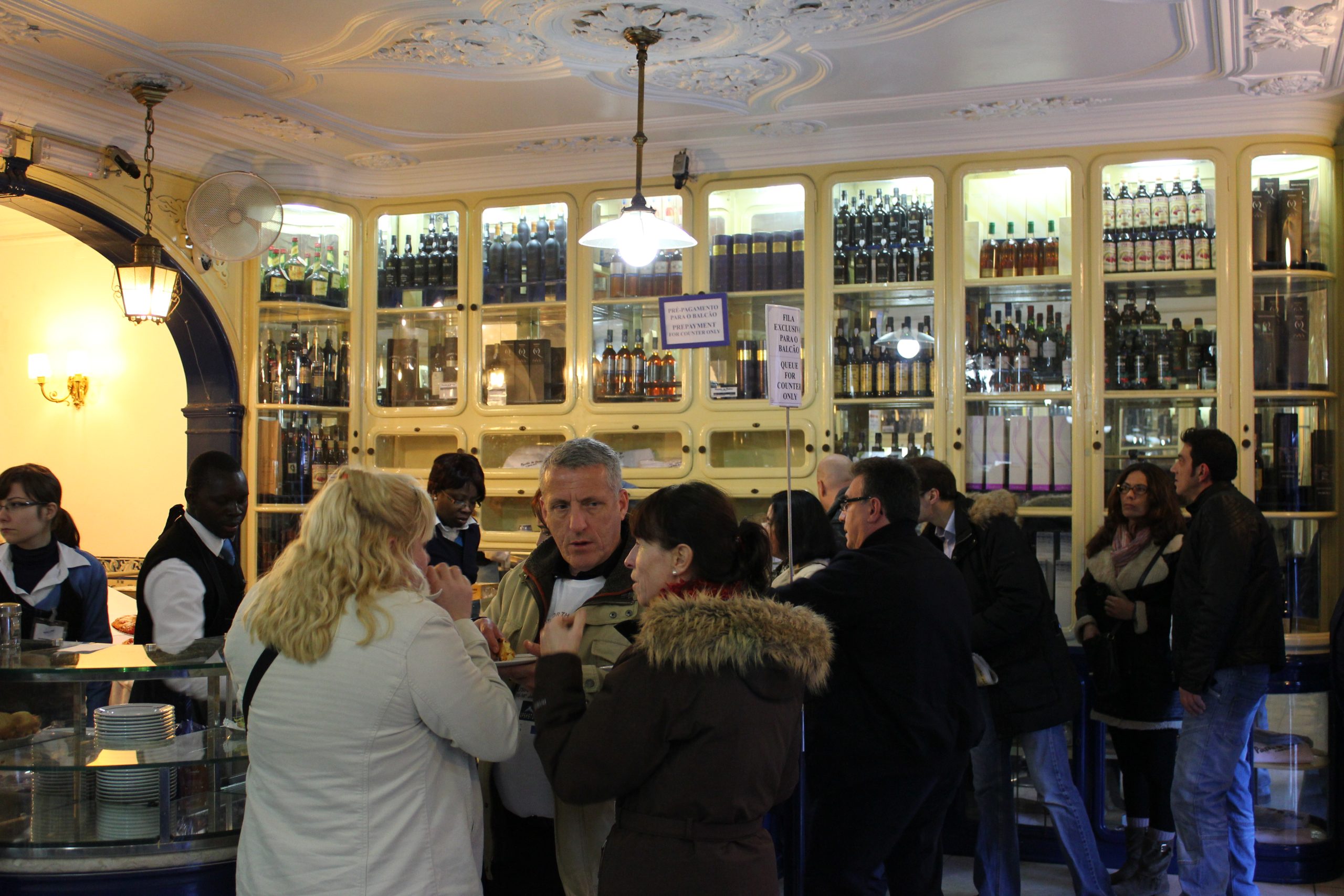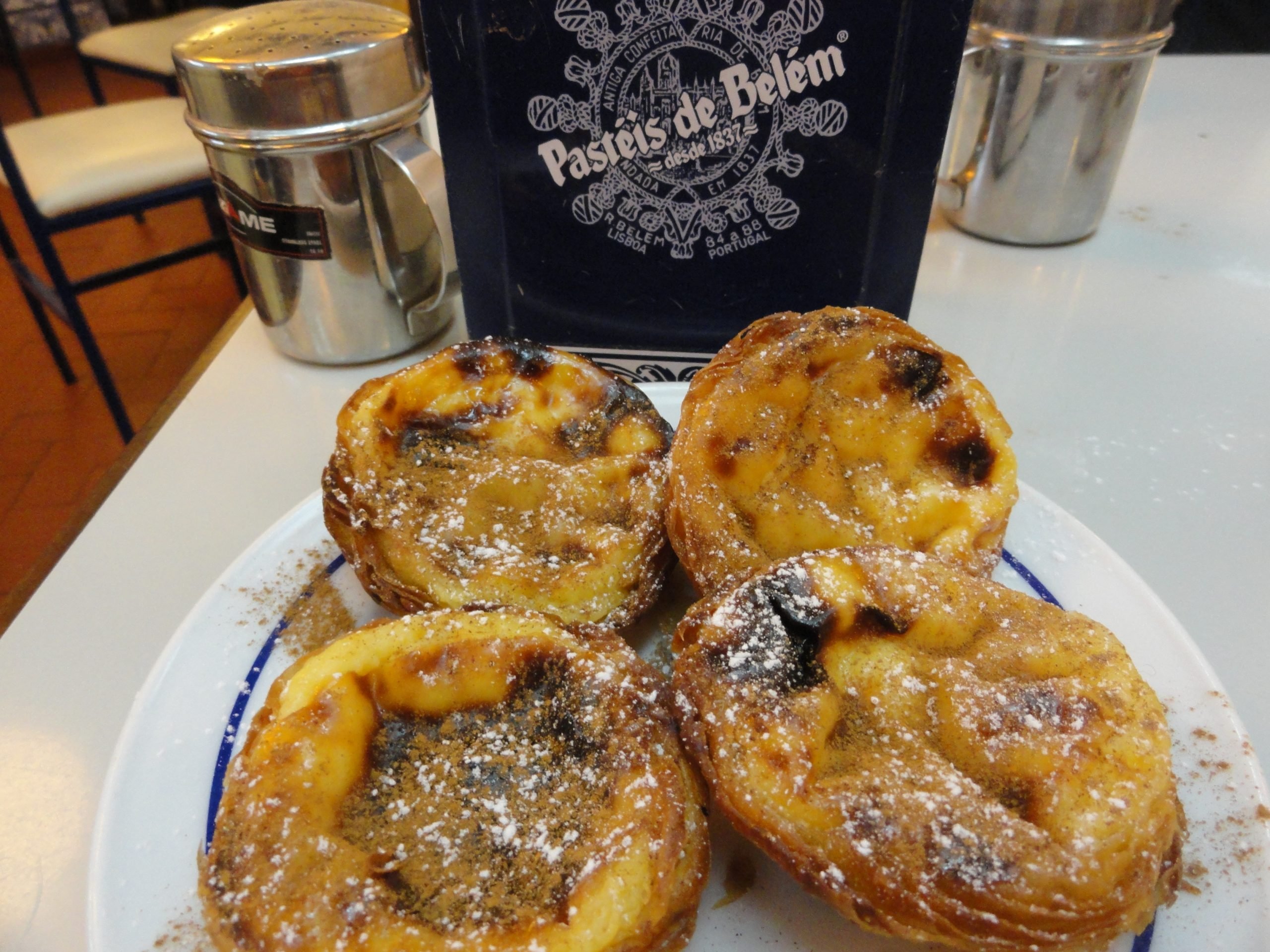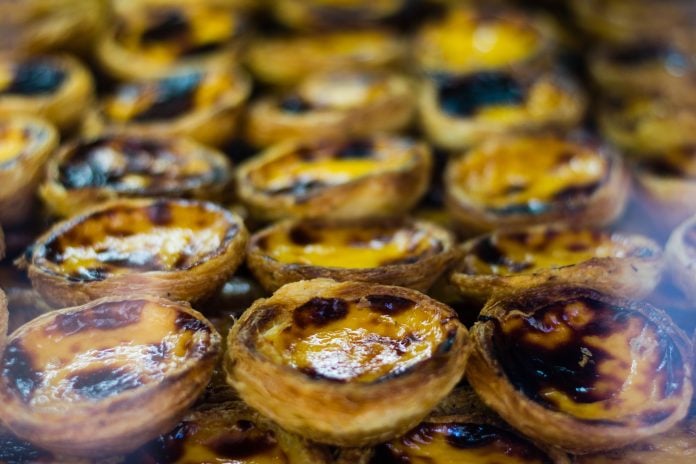The pastel de nata is a Portuguese staple. The combination of caramelized custard, puff pastry, and cinnamon sprinkles has hooked many for life. Whether you have it for breakfast with an espresso or as a snack, the pastel de nata is a part of the daily life of the Portuguese and the tourists that visit Lisbon.
Unlike other Portuguese food items that seem to remain in their country of origin, the Portuguese custard tart fills the glass showcases of bakeries and cafes worldwide. From Lord Stow’s Bakery in Macau to even Trader Joe’s in the US, Portuguese custard tarts have marked their place all over the world.
However, the original pastel de nata recipe remains in Belem, Lisbon.
But how did the pastel de nata come about?
History of the Pasteis de Nata (Portuguese Custard Tarts)
Initially produced in Belem, Lisbon, the origin of the pastel de nata is sacred and spiritual, known as the pastel de Belem. This delicacy was created before the 18th century by Catholic monks in the Jeronimos Monastery, a UNESCO World Heritage Site today.
Convents had an abundance of eggs used to starch the clothes of the Portuguese friars and nuns. With the leftover eggs, it was common that those in convents would make pastries. With egg as one of its main ingredients, this is how the Portuguese custard tart came about in the Jeronimos Monastery.

After the Liberal Revolution of 1820, religion took a step back in Portuguese society. Many convents and monasteries closed, leading monks to sell the Portuguese custard tarts in a sugar refinery to survive financially.
The monastery then closed in 1834. The monks sold the pastel de nata recipe to the sugar refinery, and three years later, the sugar refinery owners opened the Fabrica de Pasteis de Belem.
Pasteis de Belem
Today, Pasteis de Belem welcomes hundreds of thousands of visitors annually, a short walk from the Jeronimos Monastery, selling over 20,000 tarts daily. While it first opened as a factory, today, it features a shop with take-out service and a cafe to sit down and enjoy the specialty.

The place is still owned by the descendants of the initial sugar refinery owners. Pasteis de Belem also still holds the original monk recipe. The secret recipe is kept in a hidden room.
The Pastel de Belem was announced in 2011 as one of Portugal’s Seven Wonders of Gastronomy.
Along with the traditional pastel de Belem, visitors can also try out other specialties such as the English cake, Belem marmalade, king cake, and more.
This is the only place where you can try the original custard tart, but there are other places without this secret recipe serving delicious pasteis de nata in Lisbon.

Where to get a Portuguese custard tart (after Pasteis de Belem)
Again, you need to try the custard tart at Pasteis de Belem. However, if you are not in the area of Belem or do not have the time to stay in line, many other places are selling delicious custard tarts. Here are our favorite spots in Lisbon:
1. Manteigaria
Located in Largo de Camoes, Manteigaria is a popular pastel de nata factory and bakery. Visitors can watch the pastel de nata baking process while trying the traditional pastry. This is a familiar spot for locals who come here before work for a pastel de nata and espresso. However, it is open until midnight, making it the perfect place for dessert after dinner.
Manteigaria has more than one spot around the country, one in Porto’s historic center and another in Lisbon’s Time Out Market.
2. Confeitoria Nacional
Founded in 1829 in Praca da Figueira, Confeitoria Nacional is a place of history and cultural heritage. This place was the official confectioner of the royal family and one of the oldest pastry shops in Lisbon. While this place is most known for the king cake as the original owner bought the recipe, it has one of the country’s most delicious Portuguese custard tards.
3. Fabrica da Nata
Established as the best pastel de nata in Portugal by the readers of NIT, Fabrica da Nata’s show stopper is the pastel de nata. This place features several menus that allow you to taste the Portuguese custard tart. We recommend the custard tart with a Port wine glass for an excellent recommendation.
4. Pastelaria Santo Antonio
Located on the walk towards the Sao Jorge castle, Pastelaria Santo Antonio is situated in the oldest neighborhood of Lisbon, Alfama. The store is filled with a traditional blue and white azulejo facade, while the inside of the bakery is more modern. This place is known to have one of the best pasteis de nata in the Portuguese capital. Along with their award-winning custard tarts, they also serve delicious sandwiches and waffles.
5. Pastelaria Versailles
Pastelaria Versailles has been around since 1922, founded by Salvador Jose Antunes, a Portuguese man who loved French patisseries. While the original location is in Saldanha, a new place opened in Belem in 2017, located near the Museu dos Coches.
Starting at 3 pm, Versailles becomes a tea house similar to the older ages and serves classics such as vanilla eclairs. However, the pastel de nata is still a classic staple here!


